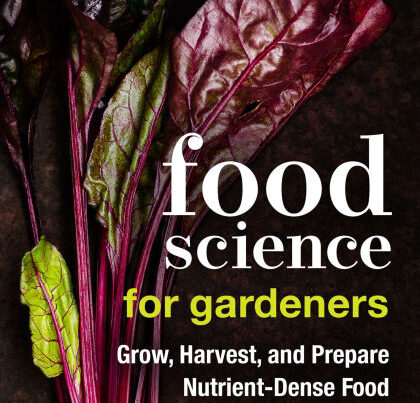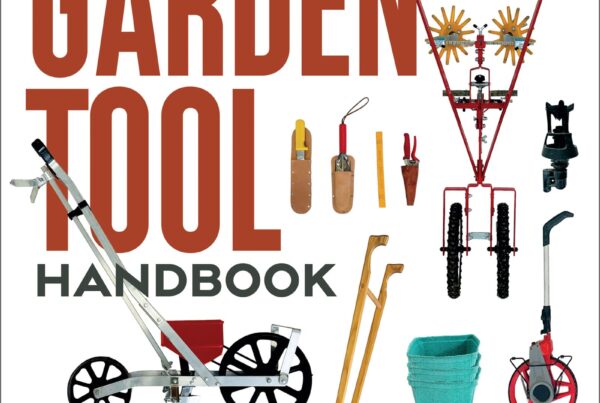It’s the time of year to be thinking about plans for the next growing season. Crop Planning for Vegetable Growers is a Golden Oldie, published in 2010.
This compact and practical workbook is for small-scale vegetable or flower growers wanting to increase the success of their enterprise by better planning, or for new farmers wanting reliable help to get started. Clearly written, it follows a fictional couple (Hanna and Bruce) working through the eleven step planning process. This is a concise,136-page, focused workbook with lots of charts, not a chatty bedtime read. But for small-scale farmers, this won’t be a dry book. As well as the excitement and relief of “Aha!” moments, readers can enjoy the chance to cement the practical tips of each chapter with a real-life example – a description of a farm tackling that chapter’s planning stage.
The approach of this book is very similar to the one I spell out in my book Sustainable Market Farming and in my Crop Planning for Sustainable Vegetable Production workshop, although I have not yet met the authors, and we constructed our plans independently. We like calculated detailed plans (remembering that those who are good at planning are often also best at changing their plans to adapt to altered circumstances). This book leads the reader with every necessary detail and worksheet. The planning templates are available to download as Excel spreadsheets from the Canadian Organic Growers website. You can then customize them for your own use. Or you can print them out and use as worksheets as they are, if you are not at ease with spreadsheets and would rather just have a ring binder of worksheets. One very important aspect of planning is to choose a method that works for you. If you find your record-keeping or planning method easy and comfortable to use, you are much more likely to use it and hence it will give you more useful results.
The eleven steps are:
- Decide your financial goals
- Decide on your markets
- Make a preliminary planting schedule
- Map your fields
- Choose varieties and finalize your planting schedule
- Make a greenhouse schedule for seedlings
- Compile your seed order
- Make a field operations calendar
- Carry out your plan
- Analyze your success
- Plan next year
Homesteaders will find this book valuable too – it’s not just for commercial growers. New growers will need to pay special attention to steps 1-7. Seasoned growers who already have a crop plan in place will find revisiting mapping (step 4) and steps 8-11 most useful. Many growers reported on savings of time and money they made as a result of using this book. The financial planning uses a slightly simplified version of Allan Savory and Jody Butterfield’s 1999 book, Holistic Management. You need to know how much money you need to earn from your fields or gardens before you decide what to plant. Remember that a dollar saved is as good as two dollars earned! Don’t rack up big expenses!
Crop Planning is written by two farmers from Quebec, so growers in other climate zones will need to keep this in mind. Hanna and Bruce’s harvest season starts at the beginning of July and runs to late October. Planting season runs from May 1 to mid-October. You will need to extrapolate at both ends if your winter hardiness zone is higher than theirs. You will also need to look at summer plantings – perhaps you won’t be planting lettuce, kohlrabi or arugula in July. You’ll need to apply your experience to the methods and decide on planting dates to fit your own harvest date goals.
Also, you won’t find info on growing Southern staples like okra, sweet potatoes and lima beans in this book. But you can feed information from elsewhere (including your own experience as a grower) into the format provided.
The fictional Hanna and Bruce in this book run a CSA as well as a farmers’ market booth, so that planning for both are conveniently included. There are profiles of twelve vegetable growers across Canada, with a range of farm sizes and types.
Measurements are included in both the metric system and the feet and pounds of the old imperial system (more common in the US). Appendices provide reference charts; tips on designing a modular field layout to facilitate crop rotations and ease the transfer of standardized lengths of row cover and drip tape; a detailed money budget; some recommendations for further reading. Sadly, no index, but the contents list is clear and straightforward.
Crop Planning will quickly repay the price. It’s all too easy to make a mistake costing this much or more if you are under-informed, or under-prepared in some other way. Pay now and save!
To buy a copy of the book in the US, for $29 with free shipping, go to Fedco Organic Growers Supply https://www.fedcoseeds.com/ogs/crop-planning-for-organic-vegetable-growers-9537
Or buy from Acres USA for about $27.27 while the sale lasts. Or buy the ebook from Canadian Organic Growers, but then the charts are not so easy to use. Direct from Canadian Organic Growers, the print book costs $25CAN cover price, plus an estimated $17CAN shipping, perhaps plus tax. Don’t go to Amazon, where the book costs over $57 with the shipping added in, and neither the publisher nor the authors get much of your money.







